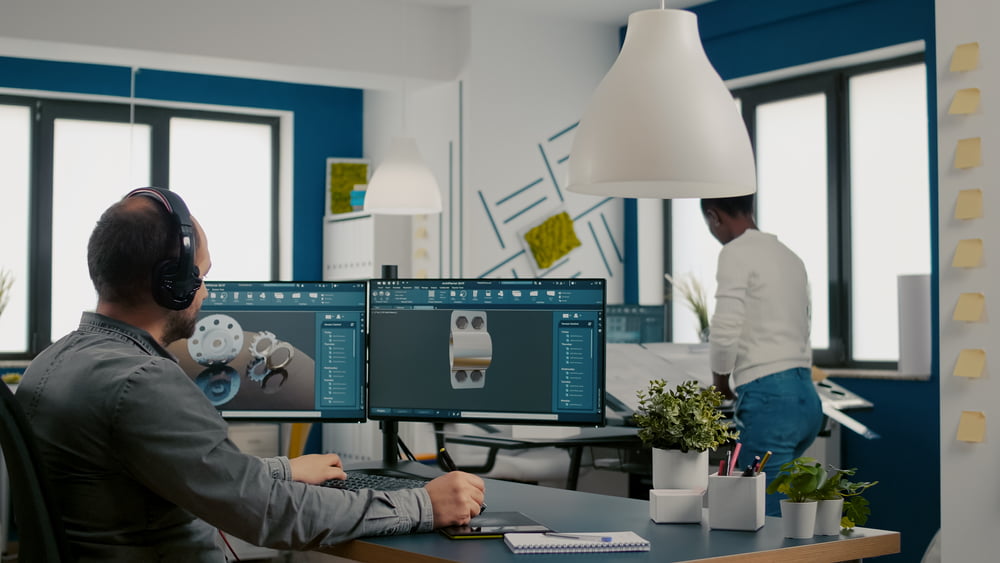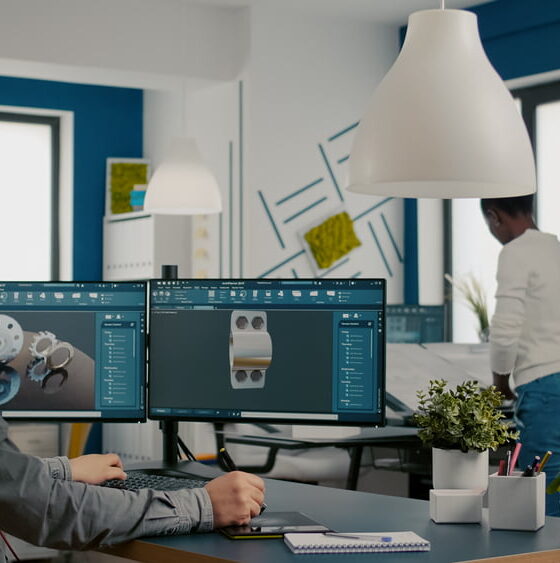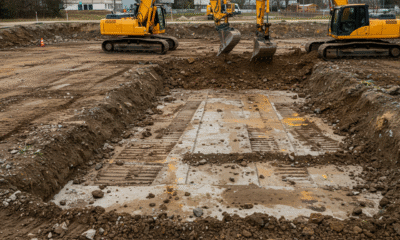

Energy
Discovery Phases for Creating Software for Renewable Energy Projects
The renewable energy sector is undergoing some major changes. Demand for this energy is booming. Analysts estimate that the market will grow over 8% a year and will be worth nearly $2 trillion by 2030.
As interest in renewable energy continues to grow, consumer and regulatory expectations are increasing. Solar cells need to have higher efficiency rates as people expect more from them. Geothermal heating systems must be proven to be safer and more reliable.
In order to meet these objectives, renewable energy companies need the best software at their fingertips. A growing number of software developers are coming up with applications for renewable energy.
The renewable energy software applications that have already been released to the market are very promising. Some of them include:
- sonnenCommunity, which is a renewable energy application that can provide “utilities without power plants.” This software application helps people store energy generated from solar cells.
- Entelligo, which is a software application that helps residential consumers find better deals on solar power.
- Sunroof, which is an application from Google that can help you determine how much solar power you can generate from your area.
These software applications are very promising for anyone relying on renewable energy. A lot of other software developers are interested in creating similar applications to help meet the growing demand for clean energy.
However, they must make sure their applications are well tested and properly vetted during a discovery phase.
Discovery Phases Are Essential for Creating Renewable Energy Software Applications
Have you ever had an idea for a software product that seemed like it would be very successful, but failed when you first brought it to market? Do you wish that you had an opportunity to test this idea for feasibility, demand and its ability to meet the user need?
This is something that many developers working towards making renewable energy mainstream have encountered. They believed that their products would thrive, due to the growing demand for renewable energy. Unfortunately, the growing demand for solar, geothermal and other forms of clean energy is no guarantee that a software application will succeed.
Fortunately, there is a way to make sure the renewable energy software applications you bring to market will succeed. Perhaps, this was not as viable before, but now there is a great way that you can test your idea! How? You can try a discovery phase for software development project!
A discovery phase is not a waste of money, especially when working on something as complex as a solar energy software application. In fact, it is one of the best investments that you will make! It gives you an opportunity to create a well simulated environment and determine the capabilities of your project. Inoxoft is a company that offers clients an opportunity to discover whether their idea will work out best for them. Their clients are always happy they went through the discovery phase.
What’s a discovery phase?
A discovery phase is the process that will save you from risky decisions and building the wrong application. How is that possible? Pretty easy. It helps by finding various insufficiencies in the project from the start. These might be badly written requirements, not enough audience and inadequate market research, features that are not relevant for end-users and other features. You can identify and improve almost any flaw during this phase.
Having a brilliant product idea does not mean it will be in-demand and popular on the day of its release. Unfortunately, failing to meet your expectations can mean that wasted substantial amounts of money and spent your valuable time on something that is completely useless. Therefore, you should pause and take a deep breath. Then, ask for the project discovery. The discovery will surely trigger the following questions:
- How can I avoid missing my the mark with my software objectives?
- Are the requirements for the system properly set properly?
- How will the end-users use the application on a daily basis?
- What trends are important for differentiating this app from the other apps?
- How many screens should I have?
- How much would it cost to develop the application?
- What is likely to be improved?
- Can improvements trigger cost increases?
- Who can consult you on your software project?
These and many more questions suit the discovery phase for software development.
How to conduct a discovery phase for your business?
For a perfect discovery phase, you need a software development provider you can trust. If you only have one, you can start your discovery and development. Coming to the software company, a client always has a minimum set of requirements. To understand what your goals and intentions are with regards to the project, a team can go through these requirements, provide possible documentation and compile a project plan. At this stage, the deployment team needs to make sure you understand what you are building, how you see it, and whether all your requirements don’t contradict each other.
The primary focus will have to focus on the following:
- Market and Needs (such as trying to align with growth projections of renewable energy sector)
- Business Goals (such as meeting profit margin targets of other renewable energy companies)
- Key Features
The discovery phase would normally be finalized in two weeks and will be based on your project complexity. If it should go up to the plan, then it will consider the following factors.
- Validating problematic spots
You need to deliver a top-quality system with 100% performance that presupposes analyzing requirements and refines them. The client transmits their end vision and tries to discuss anything possible with regards to the project to make it clear for the development team.
- Thoroughly research the needs and objectives of end users
The people who will use your end-product are the ones, who will create demand. These people also have their pain points from a user perspective. The more you can meet these – the better. Define your end-users first, then specify their needs, explain the benefits both the end-users and the client will have, and add acceptance criteria.
- Functional and non-functional requirements
Functional requirements show multiple models, functional decomposition, key business processes, and sequence diagrams to visualize the end-product. Non-functional requirements describe system characteristics, such as stability, performance, interoperability, usability, scalability and security.
- Establishing a technical vision
The discovery team has to suggest improvements or add features at this stage. The technical lead will establish a tech stack for the functionality of your choice.
- Visualizing basic wireframes
Visualization and prototyping of the future product is a common practice. The wireframe represents a layout to show the main functionality on a page. So, it considers user needs, and creates smooth navigation.
- Creating solution vision and scope document
The final step of the discovery stage is to create a document with:
- Business requirements
- Background, goals, and risks analysis
- Solution scope
- Solution strategy diagram
- Functional and non-functional requirements
- Specification of web application features/functionality
- Technical vision and architecture
- Effective technological solutions
- Basic UX design
The final result of a discovery phase
At the end of a discovery phase, the client and everyone involved will get to understand the needs of their end-users, receive complete documents with improved and accepted requirements, time and money estimates that will be involved in project development. The software development team will use matrices, data analytics tools, prototyping, scope modeling, and other means to present the end-results of the discovery to the client. The presentation should consist of:
- A project idea that has been assessed and approved
- Pain-points and risks of the end-users
- Valid functional, nonfunctional, software requirements
- Costs and time frames needed for project implementation
- Documentation with key statements and requirements
Use a Discovery Phase to Create the Best Software for Renewable Energy Applications
New software is very important for renewable energy applications. However, it has to be tested before being brought to market.
To conclude, a discovery phase is a needed stage to consider when you have no understanding of the project requirements. With the help of the discovery team like ours at Inoxoft you will get to know your project details inside out and receive on-the-spot solutions to improve problematic moments. Even if you won’t consider the provider for software development, the team is still to provide you with documentation and specificities. What do you get out of it all? You don’t waste time, costs and resources for the project that won’t work. And, this is an advantage for you as a client. The discovery phase has only pluses with regards to its implementation. It takes several weeks and gives out valuable papers that will change your business towards success.


 Environment10 months ago
Environment10 months agoAre Polymer Banknotes: an Eco-Friendly Trend or a Groundswell?

 Environment11 months ago
Environment11 months agoEco-Friendly Home Improvements: Top 7 Upgrades for 2025

 Features9 months ago
Features9 months agoEco-Friendly Cryptocurrencies: Sustainable Investment Choices

 Features10 months ago
Features10 months agoEco-Friendly Crypto Traders Must Find the Right Exchange





























